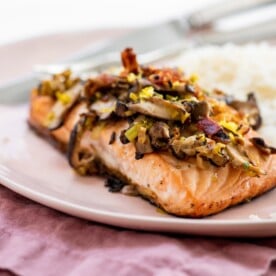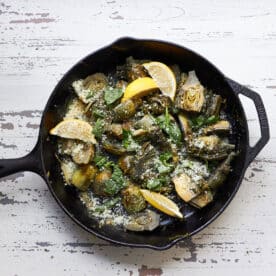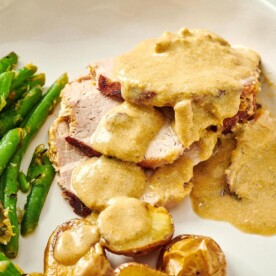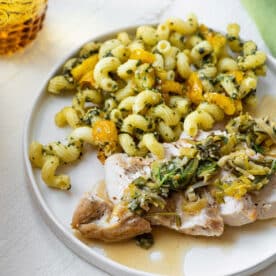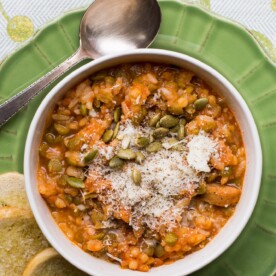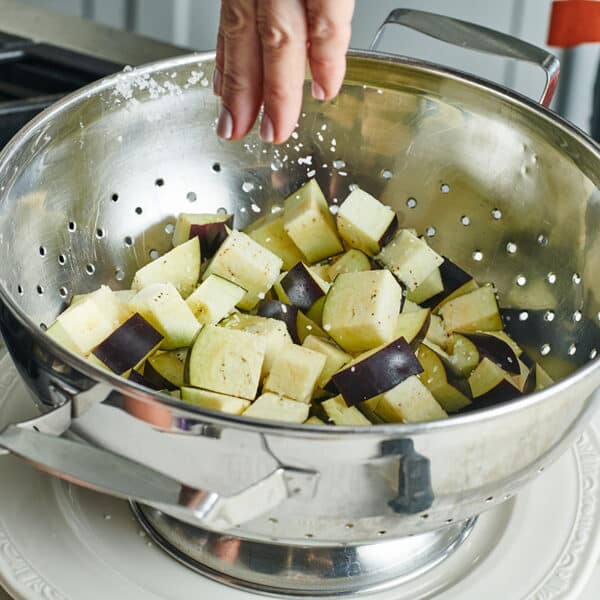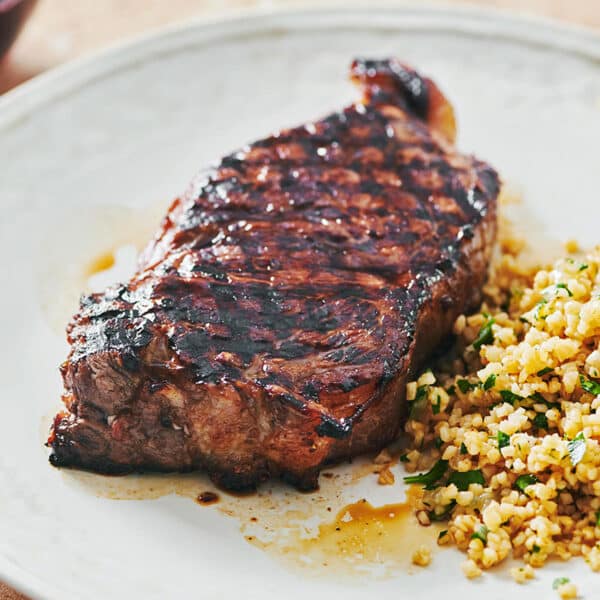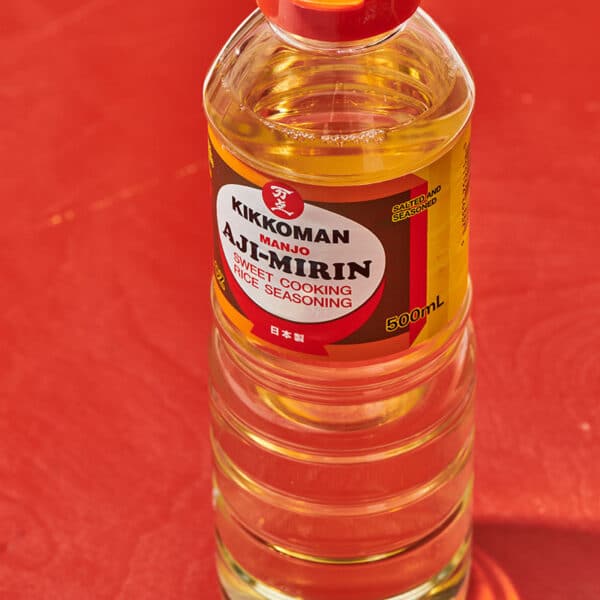How to Cook Leeks
on Apr 02, 2024, Updated Jul 12, 2024
This post may contain affiliate links. Please read our disclosure policy.
Preparing leeks is easy and leads to some delicious recipes.
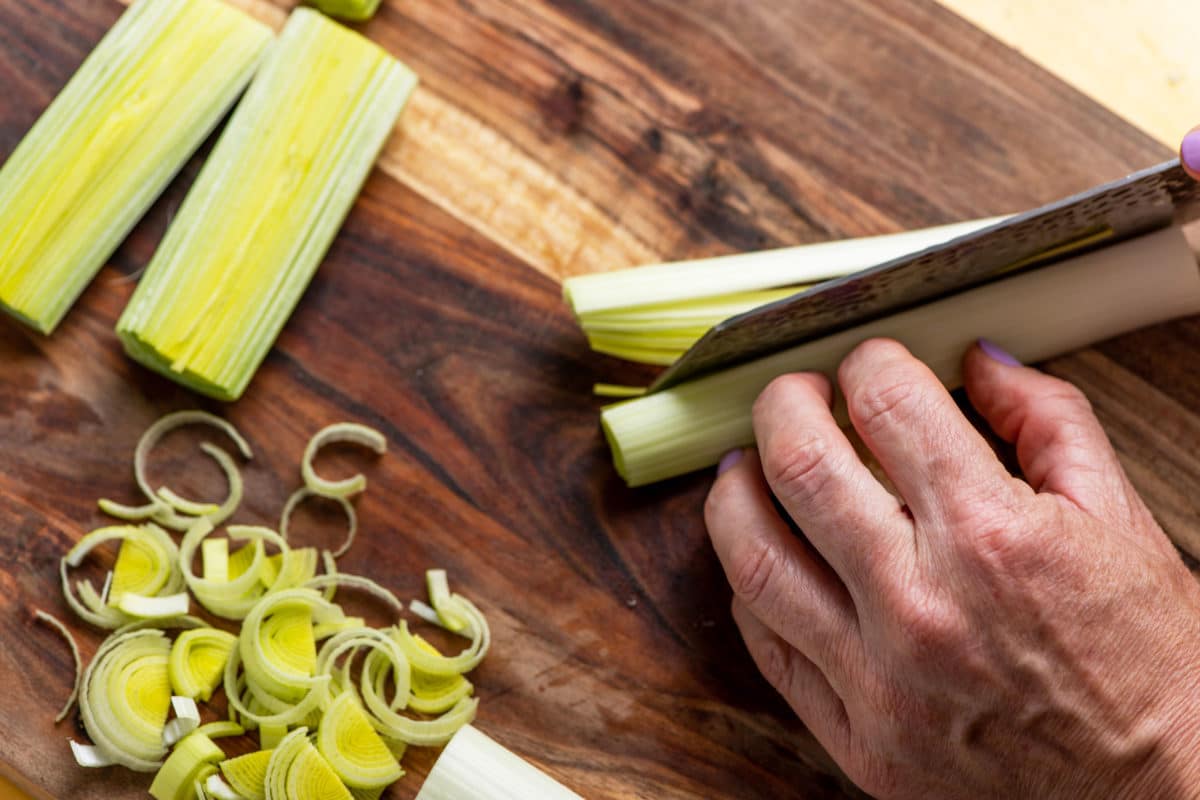
Let me start by saying that leeks (along with shallots) are one of my very favorite parts of the gorgeous world of onions. So I am truly happy to be spreading the leek gospel. Milder than onions, especially when cooked, the cylindrical white and green alliums are wonderful in so many different preparations and recipes. Once you start cooking with this vegetable, you will always want to have them in your fridge.
What's In This Post?
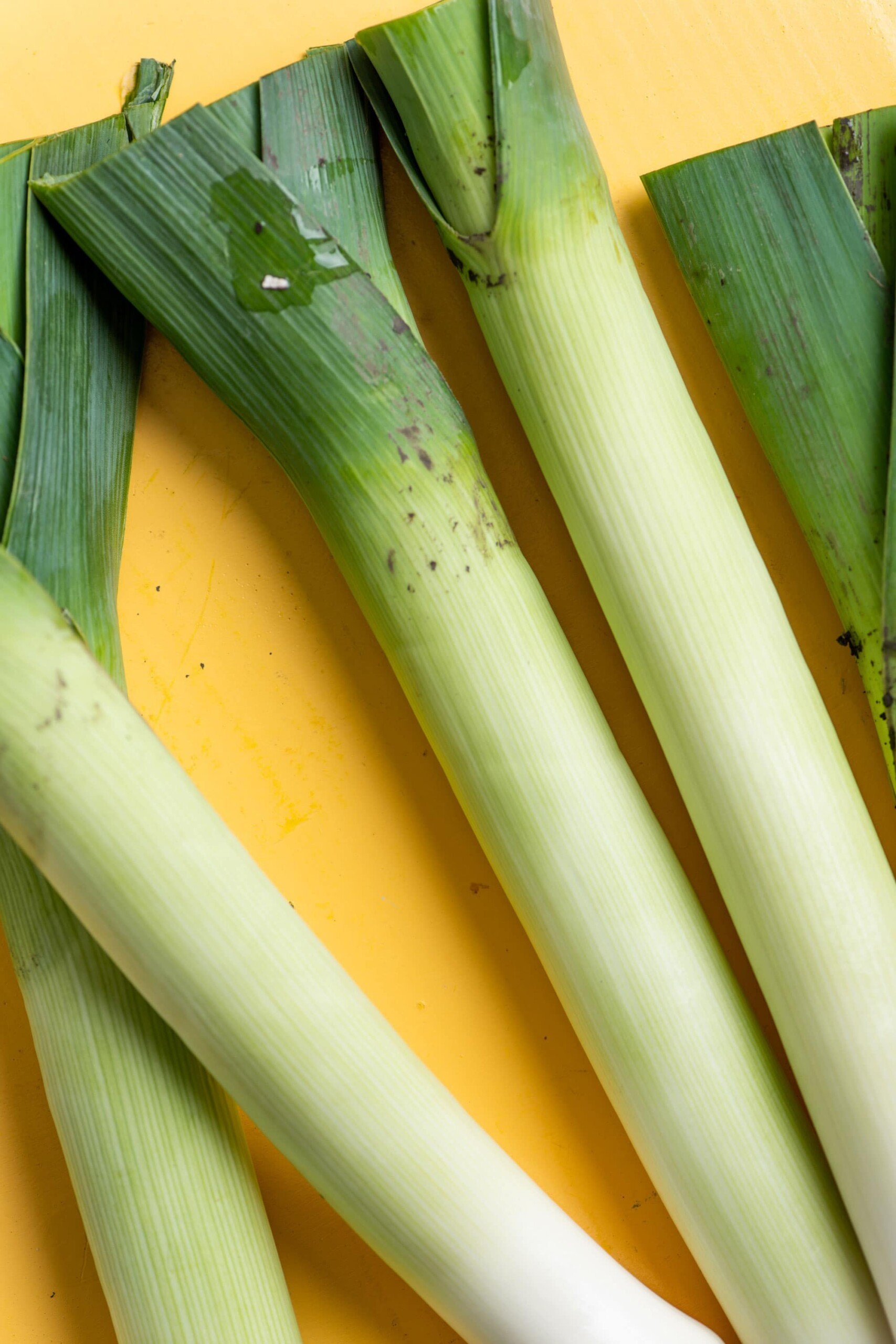
What Are Leeks?
Leeks are a member of the Allium family, which is essentially the onion family. They can be used in any way that you would use an onion…which, as you surely know, is lots and lots of ways.
By signing up, you agree to our Privacy Policy.
What Do Leeks Look Like?
Leeks look like oversized scallions or green onions, long and cylindrical. The bottom few inches or so of the bulbs are white and then the color transitions fairly quickly to light green, then to very dark green at the tops.
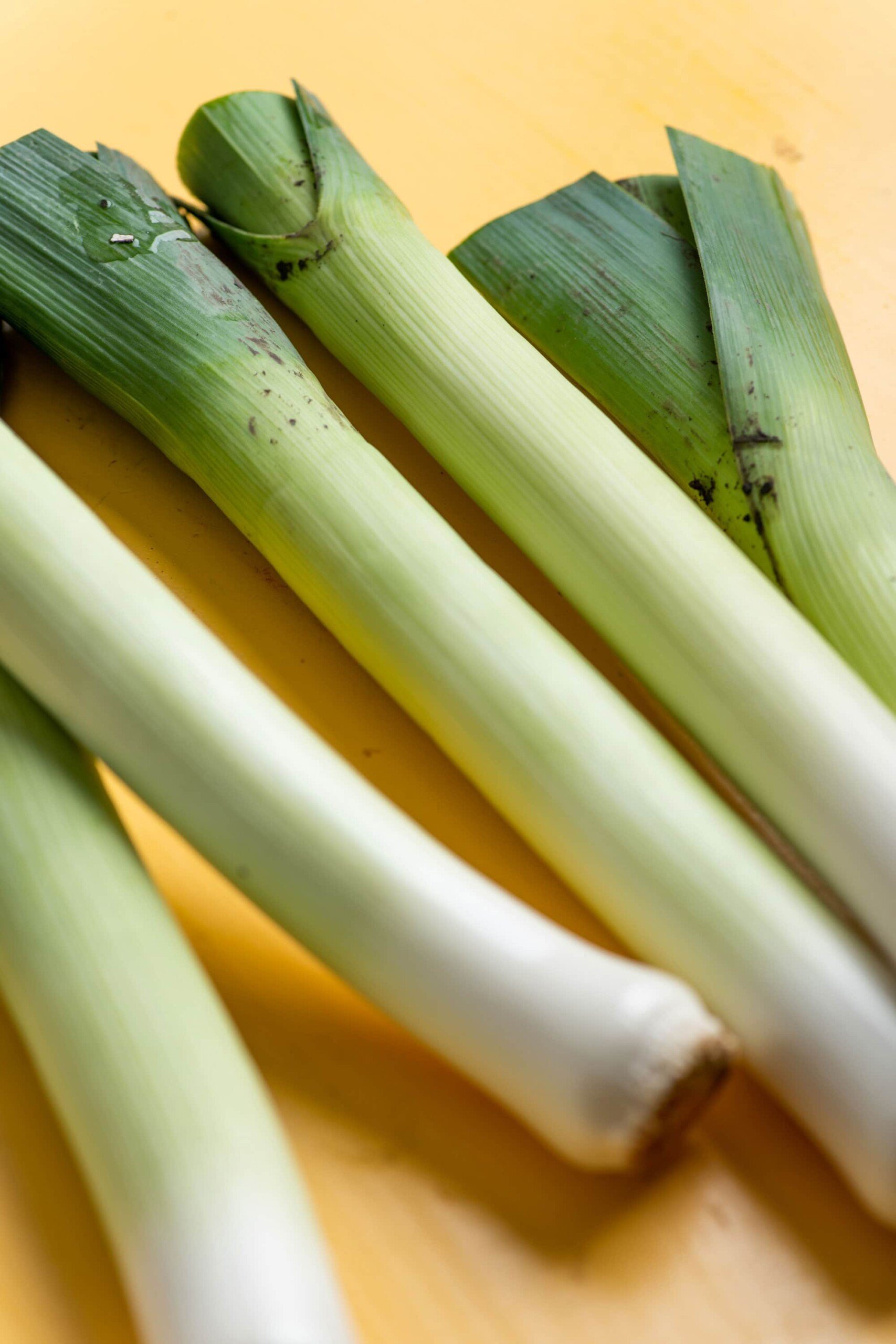
What Do Leeks Taste Like?
Leeks taste like a slightly milder, sweeter, and mellower onion. The flavor is quite gentle, particularly when cooked, which is how most leeks are prepared. Raw leeks can be quite strong.
How to Cook Leeks: Answers to all of those questions about how to buy, store, cut, prepare, and cook with leeks!
FAQs
Choose leeks that are no more than 1 1/2 inches in diameter if possible. Larger leeks can be more fibrous, with a woody core in the middle (which can be cut out). You will find that some outer layers aren’t as firm and fresh and, therefore, need to be removed and tossed (or rinsed and used to make stock, such as turkey stock). Choose firm leeks with nice taut layers, and at least 3 inches of pure white base if possible.
You want to use only the more tender light green and white parts for cooking and eating. The dark green parts are quite tough and difficult to chew and digest; not very pleasant to eat. If any of the outer layers of the leaf are soft or loose, you will want to remove them and save them along with the dark greens to make stock; more on that below.
The dark green tops of leeks are very fibrous and tough, and can be cleaned well and used to flavor stocks. Leek greens can also be added to the water when simmering other foods such as potatoes, artichokes, or shellfish. You can also line a bamboo steamer with them for a little extra flavor for your steamed dumplings and buns. Also, if you clean leeks but don’t cut them up, you can line them up in a roasting pan, creating a makeshift rack of sorts, and roast a chicken or piece of meat on them. The leeks will soften during cooking, and absorb the juices and flavor of the meat.
They are available in the fall and the spring. The spring leeks are smaller and more mildly flavored.
How to Clean Leeks
Leeks push their way out of the ground, trapping quite a bit of dirt between the layers. To clean leeks, trim off the root end, and then the dark green tops. Sometimes, in the middle of the leek, you can find some inner light green layers buried within dark green outer layers, and it’s worth cutting off the dark green leaves in the middle to get the light green core, which is very edible.
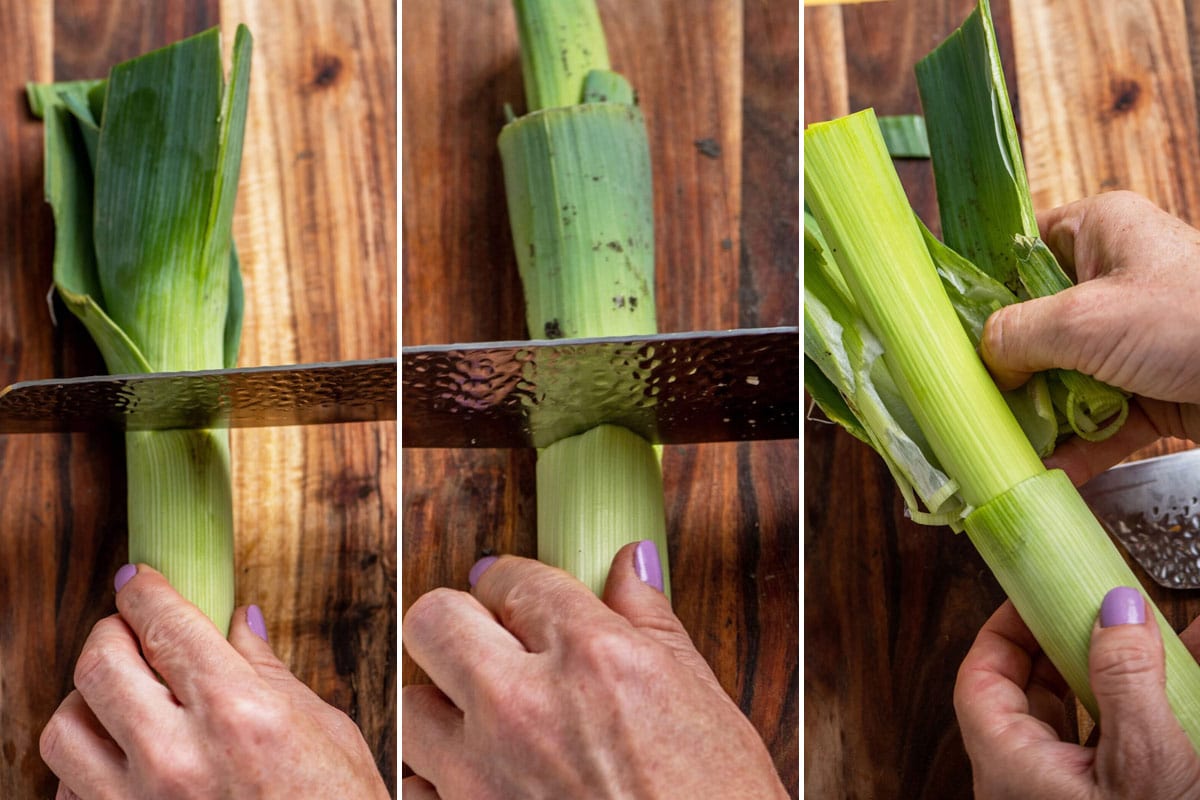
Wash the cut or trimmed leeks extremely well under cold water just before using. You can halve them lengthwise. Or, if you are slicing or chopping them for a recipe, you can do that before rinsing them to make it easier to remove the dirt.
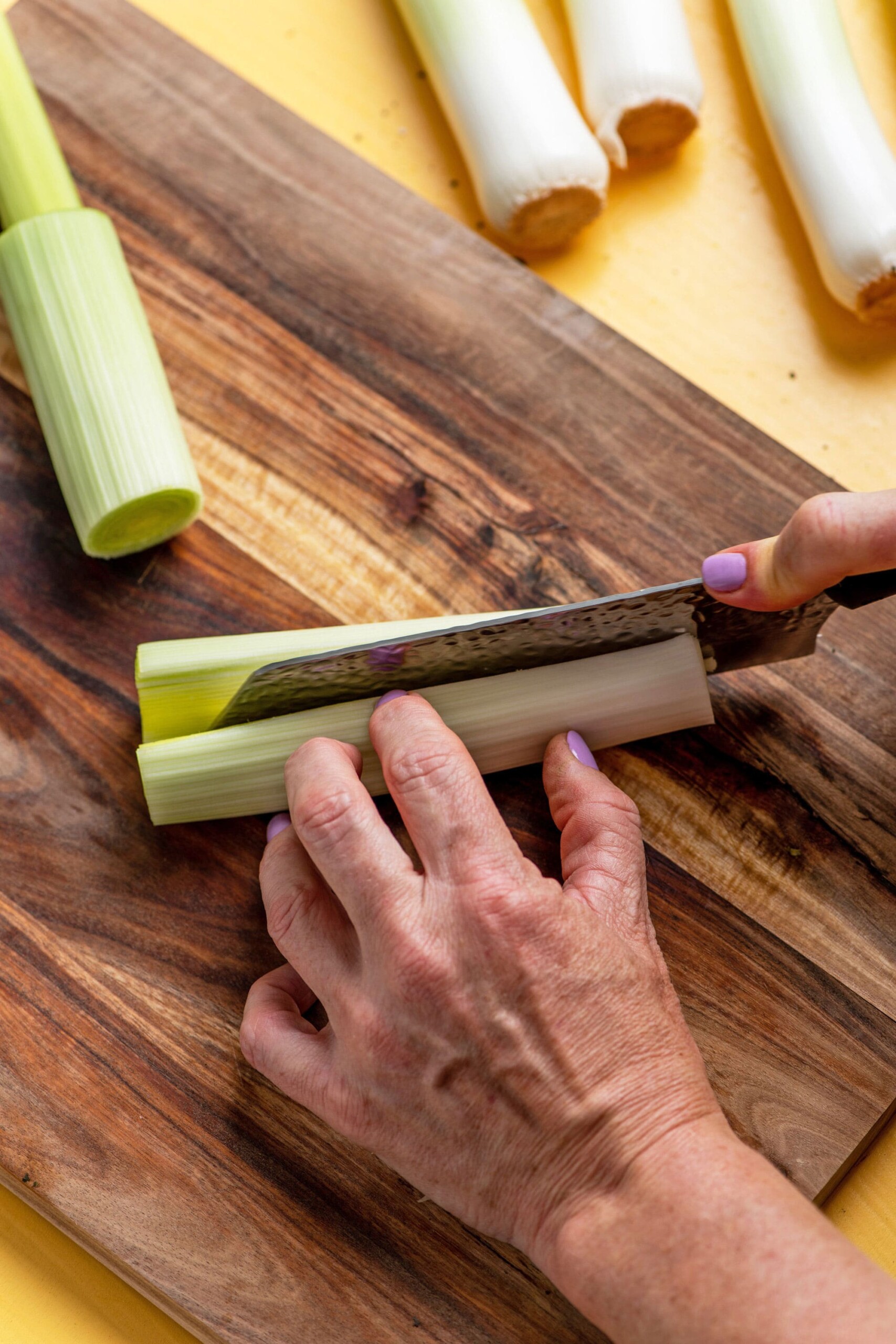
How to Cut Leeks
Again, just use the white and light green parts. You can slice them crosswise into disks that will separate as you cook them, or slice the leeks lengthwise and then slice them.
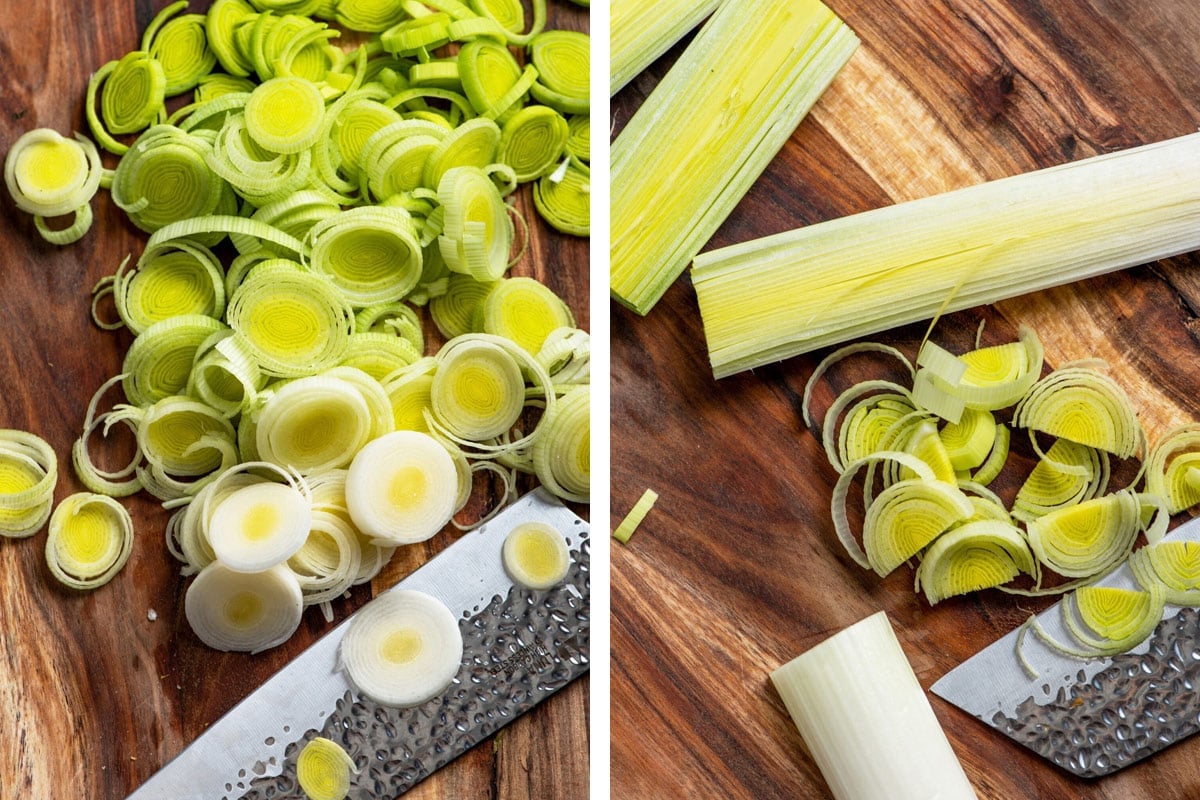
You can also chop them. One easy way to do that is to slice the leeks lengthwise into strips and then cut them crosswise.
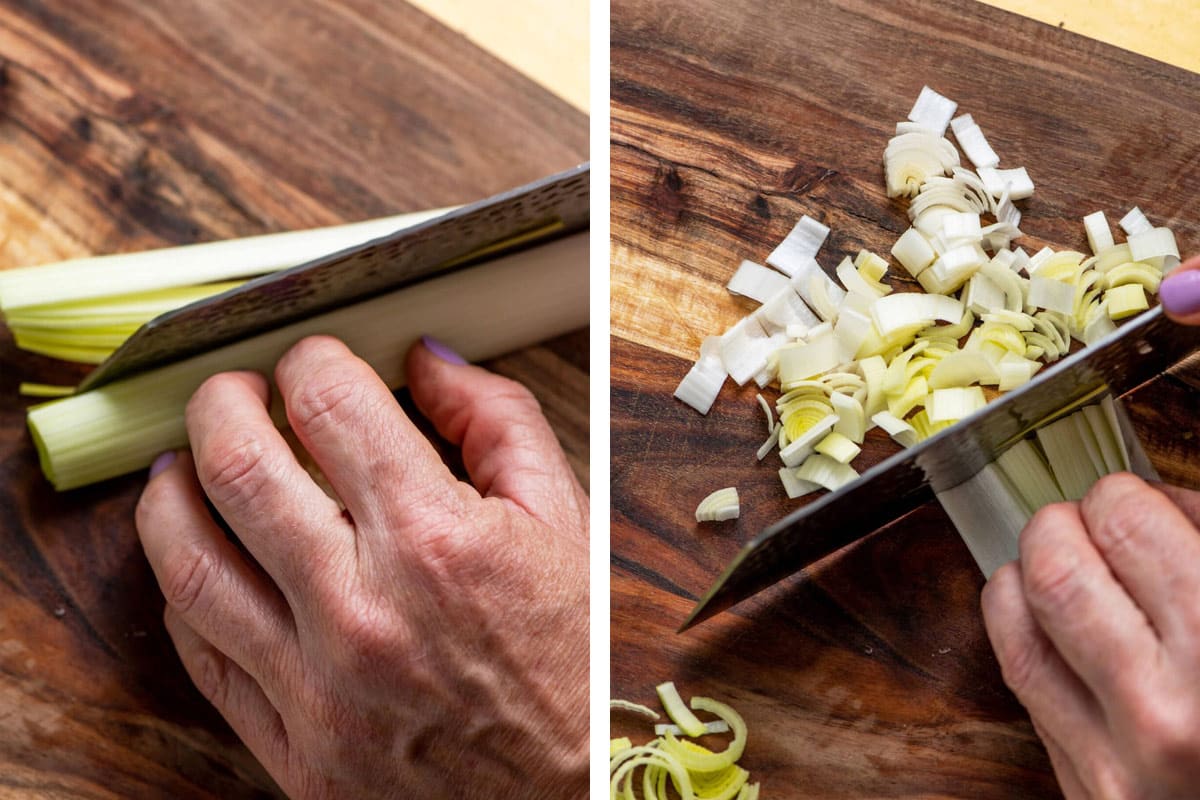
How to Use Leeks
There are lots of ways to use leeks, as there are many ways to use onions. Leeks can be eaten raw, though this is a more unusual presentation. They are best very thinly sliced or minced when uncooked. Like all members of the allium family, leeks are definitely more intense and oniony when uncooked.
Leeks are usually used much like onions and the like — cooked as a supporting aromatic in all kinds of recipes, from braises to pan sauces. Sautéed leeks are like sautéed onions — an amazing building block or base for all kinds of dishes.
Leeks can be sautéed, roasted, steamed, stir-fried, and just plain fried (sometimes fancy restaurants top dishes with thinly slivered and quickly fried crispy leeks). But they can also be cooked and featured as a vegetable in their own right (which is more common in European cooking); roasted and braised leeks are terrific.
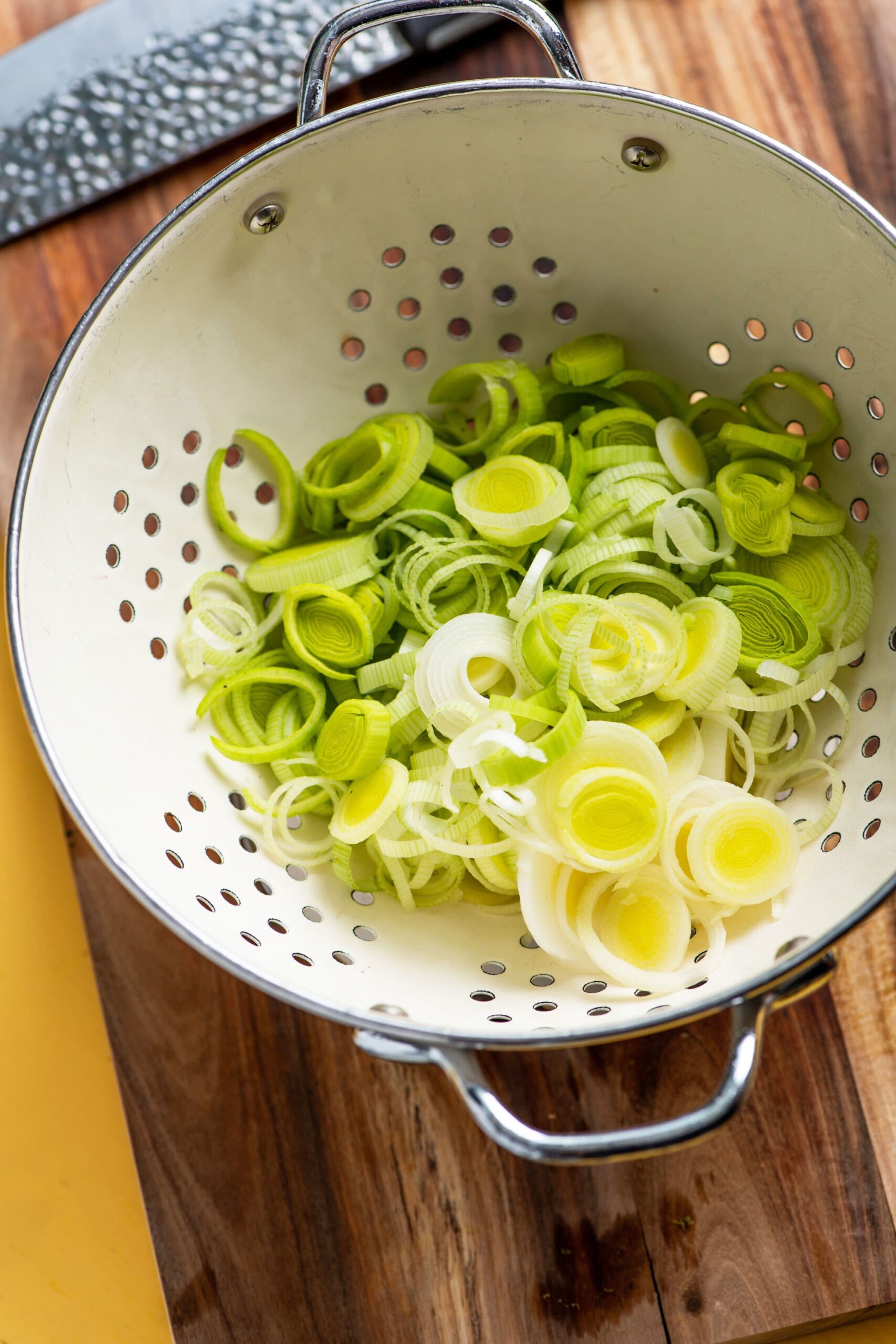
Substituting Leeks for Onions
You can substitute leeks for onions in pretty much any recipe. Again, use only the tender white and very light green parts of the leek.
Leeks are a bit milder than some onions, but not much. You can pretty much substitute leeks for onions on a one-to-one basis (e.g., 1 cup chopped leeks for 1 cup chopped onions). Or, if you think your leeks are particularly mild, go for 1 1/2 cups of leeks for every 1 cup of onions called for in a recipe.
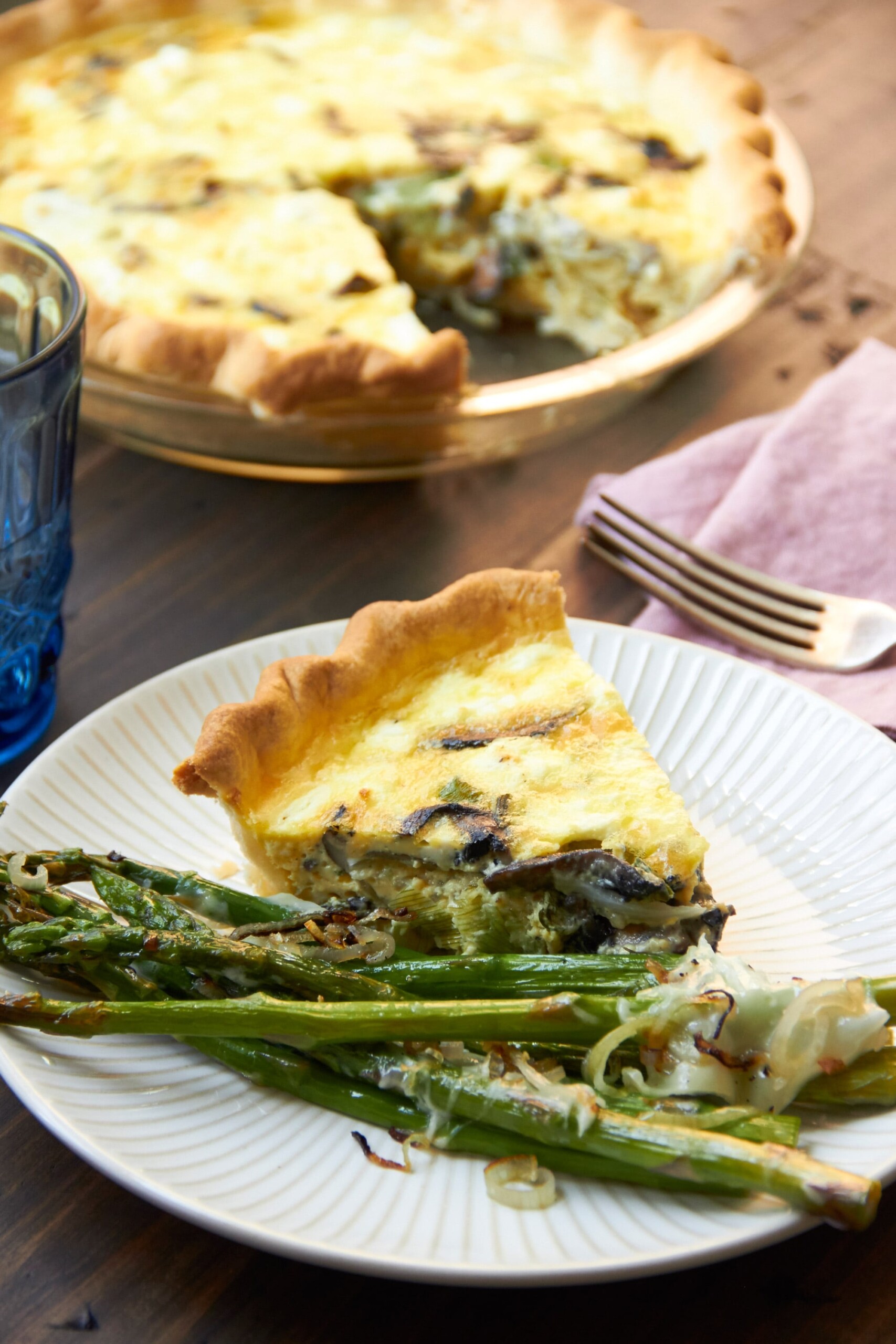
How to Store Leeks
For leeks to last as long as possible, don’t trim or wash them until you are ready to use them. The roots and dark green leaves help them last longer — up to two weeks. If you do want to cut your leeks for a recipe, do it only a couple of days ahead of time. Leeks will last in the refrigerator for about two weeks, loosely wrapped in a plastic bag.
9 Leek Recipes
Use leeks in any recipe that calls for onions, or try one of these delicious leek recipes.
Orange Salmon with Leeks and Mushrooms
Spring Vegetable Soup
Braised Baby Artichokes with Leeks and Capers {Vegetarian}
Milk-Braised Pork
Dutch Oven Idaho Potatoes
Chicken with Leek White Wine Pan Sauce
Pan-Seared Pork Chops with Madeira and Leek Cream Sauce
Leek, Chicken Sausage, and Split Pea Soup
Leek, Mushroom, and Goat Cheese Quiche
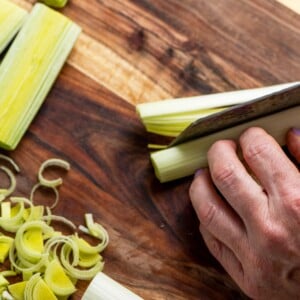
How to Prepare and Cut Leeks
Equipment
Ingredients
- Leeks
- Water (as needed for cleaning)
Instructions
- To clean leeks, trim off the root end and then the dark green tops. Sometimes, in the middle of the leek, you can find some inner light green layers buried within dark green outer layers, and it’s worth cutting off the dark green leaves in the middle and peeling them away to get the light green core.
- Wash the cut or trimmed leeks extremely well under cold water just before using. You can halve them lengthwise. Or, if you are slicing or chopping them for a recipe, you can do that before rinsing them to make it easier to remove the dirt.
- Again, just use the white and light green parts. You can slice them crosswise into disks, that will separate as you cook them. Or slice the leeks lengthwise and then slice them into half moons (which will also fall apart). You can also chop them; one easy way to do that is to slice the leeks lengthwise into strips and then cut them crosswise.
